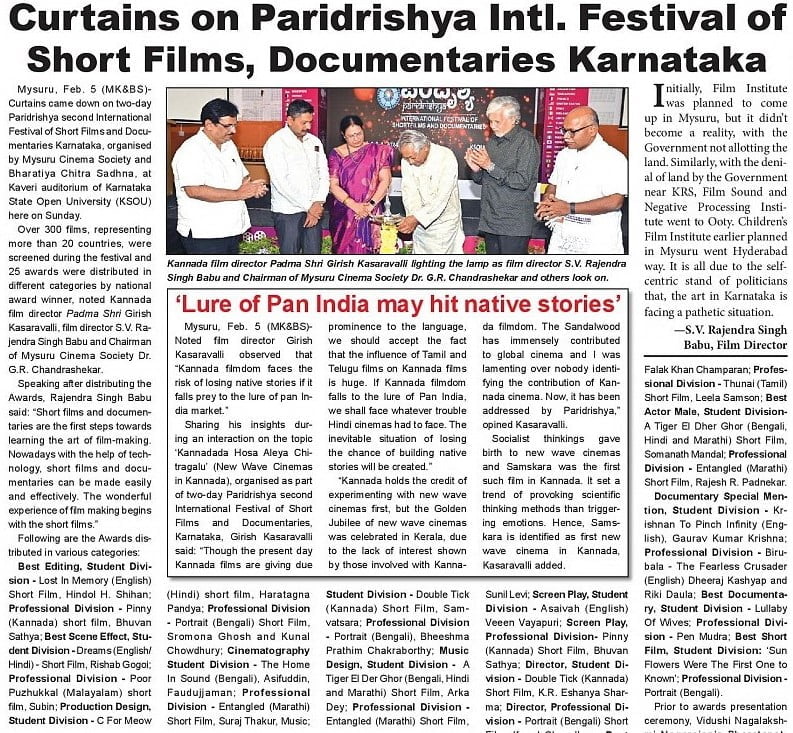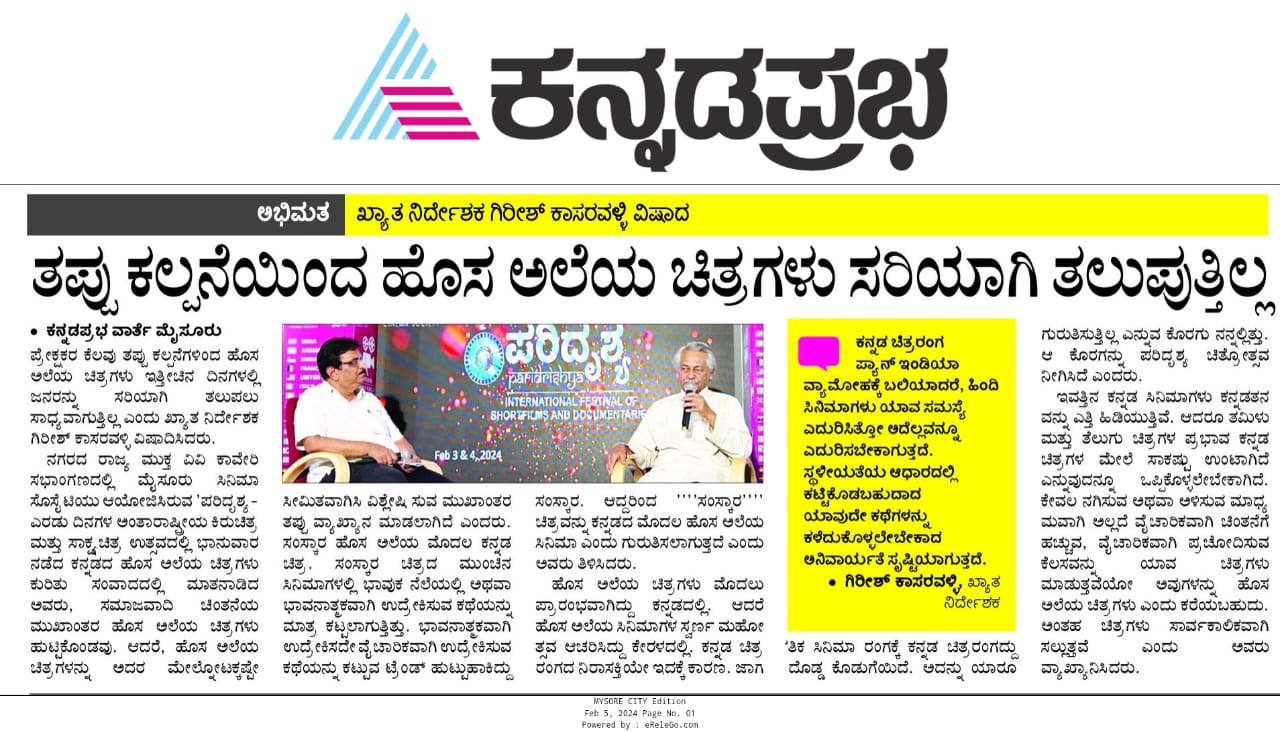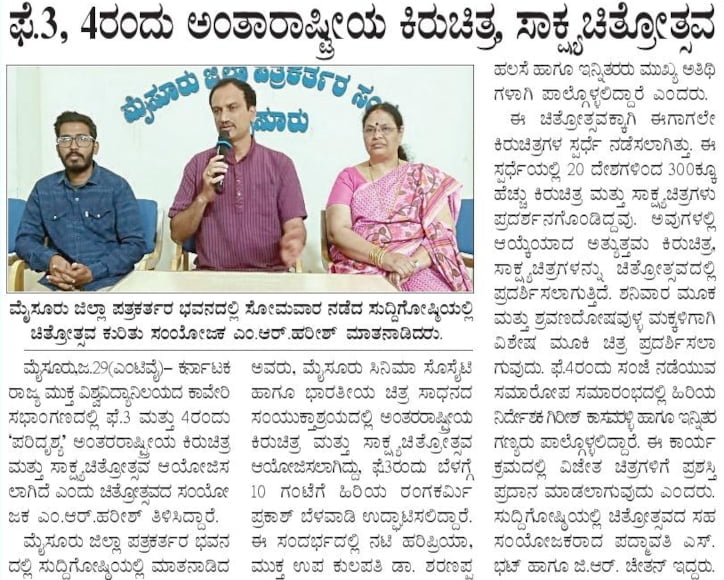ಪರಿದೃಶ್ಯ ಅಂತಾರಾಷ್ಟ್ರೀಯ ಕಿರುಚಿತ್ರ: ವಿವಿಧ ವಿಭಾಗಗಳಿಗೆ ಪ್ರಶಸ್ತಿ ಪ್ರದಾನ
Cinema serves as a profound reflection of both the macro and micro facets of culture. On a macro level, films encapsulate the grand narratives, societal norms, and ideologies that dominate a particular era. For instance, the political climates and historical contexts of different periods are vividly portrayed in movies, providing a window into the collective mindset of society during those times. For example, films made during the Cold War era often depict themes of espionage and paranoia, mirroring the geopolitical tensions of the period. Similarly, the civil rights movement of the 1960s finds its representation in cinema through stories that highlight racial struggles and social justice.
On a micro level, cinema delves into the intimate, everyday aspects of culture. This includes family dynamics, personal beliefs, and individual experiences that shape the human condition. Films like “The Godfather” or “Parasite” offer a close examination of family ties and societal structures, reflecting the complexities and intricacies of individual lives within a broader cultural context. These narratives resonate with audiences on a personal level, as they mirror the subtleties of human relationships and personal aspirations.
Directors, screenwriters, and actors play pivotal roles in capturing and portraying these cultural nuances. Their creative vision and interpretative skills bring depth and authenticity to the portrayal of cultural elements. For instance, the meticulous direction of filmmakers like Martin Scorsese or the nuanced scripts of screenwriters like Aaron Sorkin provide rich, layered representations of cultural phenomena. Actors, through their performances, breathe life into these narratives, making the cultural reflections both tangible and relatable.
In essence, cinema acts as a cultural time capsule, preserving and reflecting the values, struggles, and aspirations of the society from which it originates. By examining various films across different genres and eras, one can gain a comprehensive understanding of the cultural landscapes they depict, making cinema an invaluable resource for cultural study and appreciation.
Cinema as an Agent of Cultural Change
Cinema holds a unique position as an agent of cultural change, wielding the ability to shape and redefine societal norms, beliefs, values, and practices. Throughout history, films have not only reflected the cultural zeitgeist but also actively participated in its evolution. For instance, the portrayal of marginalized communities in cinema has significantly contributed to broader societal awareness and acceptance. Films such as “Milk,” which chronicled the life of gay rights activist Harvey Milk, have played a crucial role in challenging homophobic attitudes and advocating for LGBTQ+ rights. Similarly, movies like “The Color Purple” and “Moonlight” have brought the struggles and triumphs of African American communities to the forefront, prompting critical conversations about race and equality.
Moreover, cinema has the power to break down stereotypes and offer new perspectives. The depiction of strong, independent female characters in films like “Wonder Woman” and “Hidden Figures” has not only challenged traditional gender roles but also inspired a generation of young women to aspire to greater heights. By presenting alternative narratives, cinema can dismantle entrenched biases and pave the way for progressive thought.
Cinema’s influence extends beyond individual films to spark societal change and social movements. For example, the film “Selma” rekindled interest in the Civil Rights Movement, encouraging renewed activism and dialogue around racial justice. Similarly, “An Inconvenient Truth” played a pivotal role in raising awareness about climate change, galvanizing environmental movements worldwide.
However, the power of cinema is not unequivocally progressive. It can also serve as a tool for propaganda, reinforcing existing power structures and disseminating ideologies. During wartime, films have been used to bolster nationalistic sentiments and justify political agendas. Consequently, the dual potential of cinema to either uphold or dismantle power structures underscores its complex role in society.
Lastly, cinema itself is an expression of culture, with artistic and creative choices in filmmaking contributing to the cultural tapestry. The themes, narratives, and aesthetics chosen by filmmakers are often reflective of the cultural milieu, making cinema a mirror and a molder of culture simultaneously.








